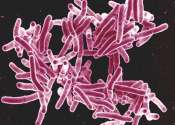Study of how genes activate yields surprising discovery
Scientists at Albert Einstein College of Medicine of Yeshiva University have made an unexpected finding about the method by which certain genes are activated. Contrary to what researchers have traditionally assumed, genes ...



